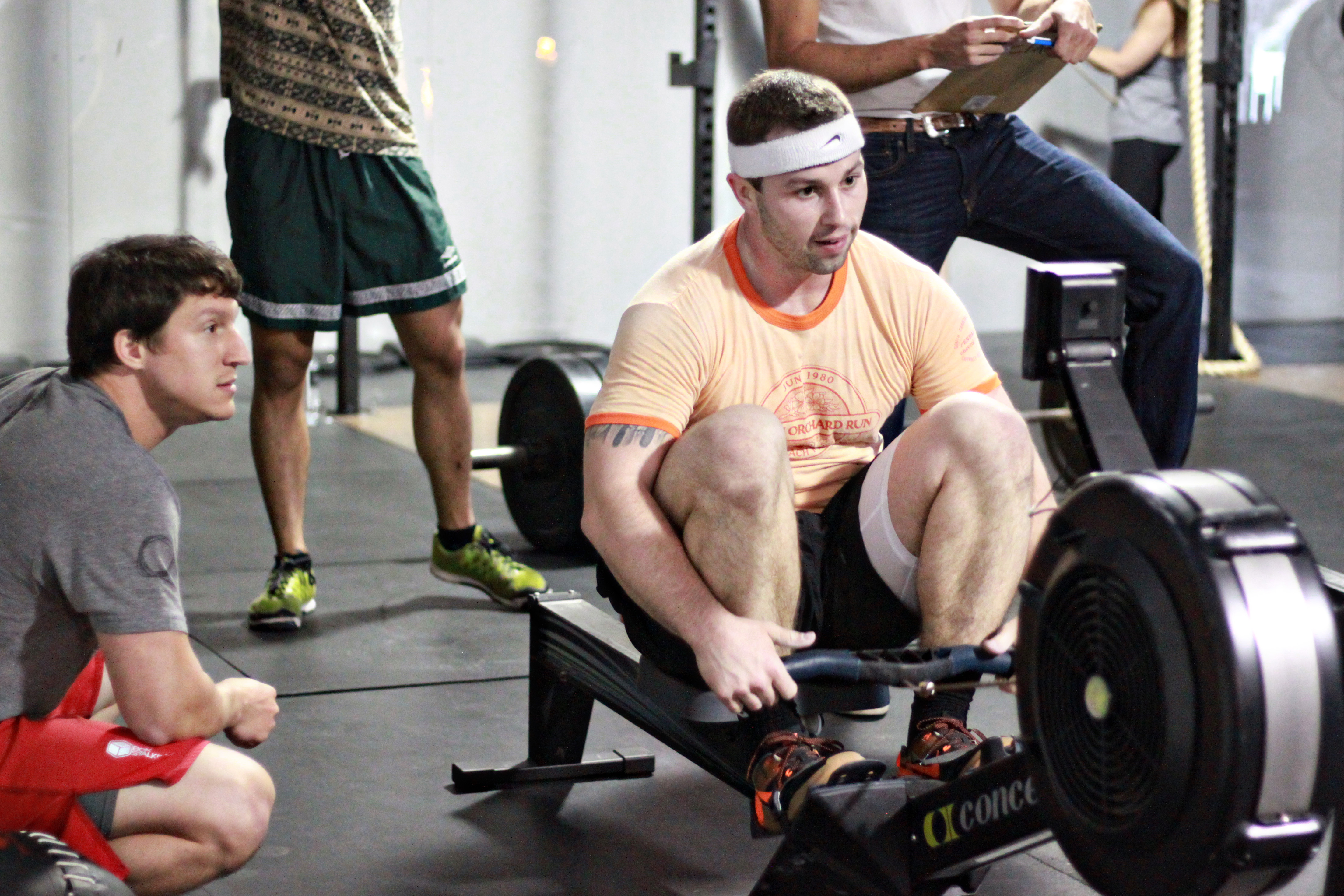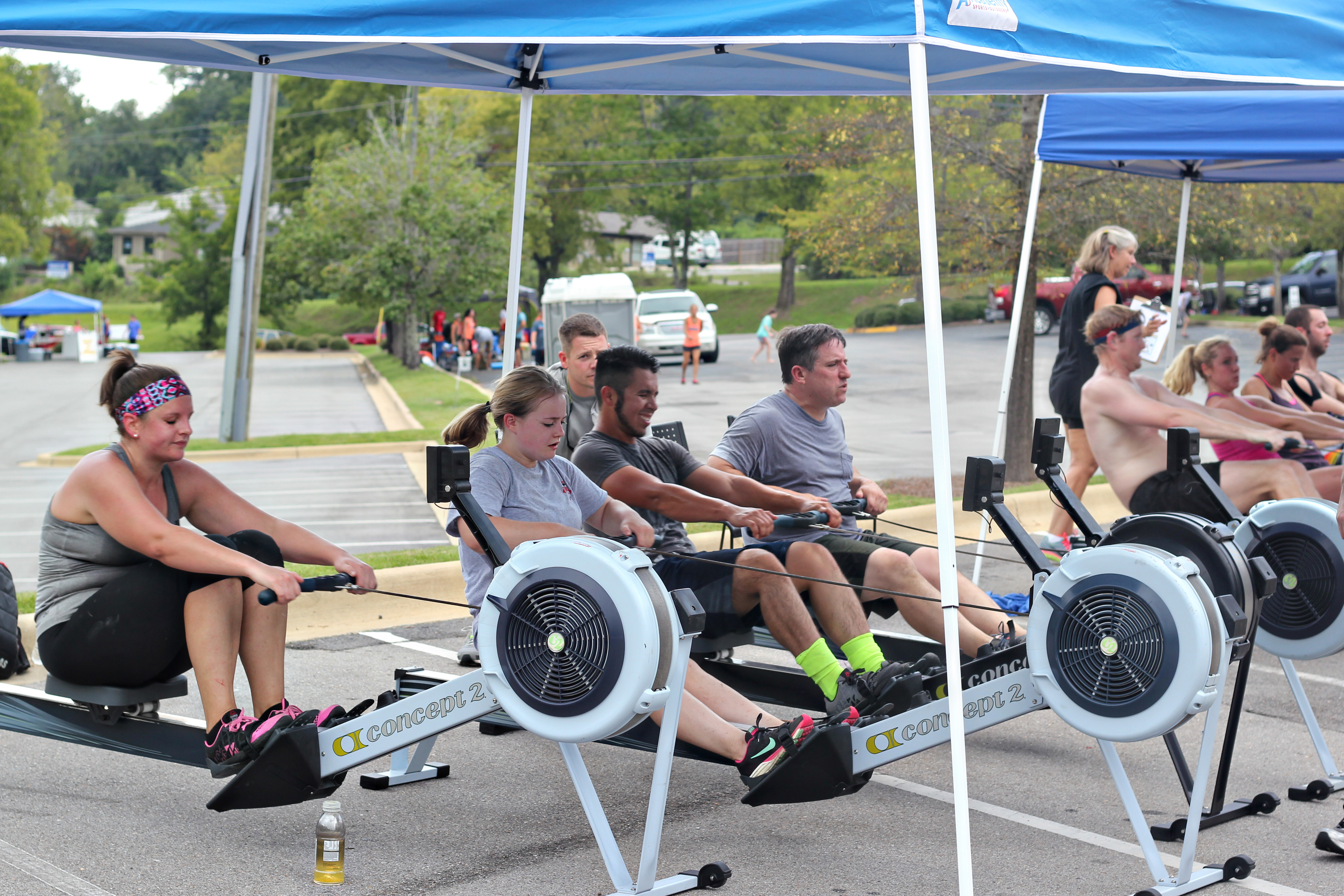
Do you really really love rowing? Are distance events your thing? Have you always wanted to do a marathon or half-marathon, but the thought of running that far makes you want to chop off your feet at the ankles?
Concept2 understands you, and has an endurance challenge to get excited about.
Between May 1 and 15, they’ll be hosting their four annual marathon and half marathon row challenge online.
Athletes from around the globe can register to complete the full marathon (exactly 42,195 meters) or the half marathon (exactly 21,097 meters) during the two-week period for major bragging rights.
If you remember, back in 2013 Games competitors kicked off the event with a half-marathon row that left more than one elite athlete thinking “Why me?!” Even badass Sam Briggs was quoted as saying “Never again!” when she got off her rower.
Rowing a marathon or even a half-marathon isn’t something to enter into lightly, but not to worry my competitive friends. We called in an endurance expert to give you every training tool you’ll need to prepare for the big day, and cross that finish line feeling accomplished, if a little sweaty.

The Expert
To help us give you the best possible info, we’re calling in the big guns. Enter Rachael Colacino, pictured above, MBA, Level 1-certified CrossFit Trainer, Pose Running Technique Specialist and assistant coach with CrossFit Endurance Headquarters — one of only 12 coaches total worldwide on headquarters staff). She is the Endurance Coach at CrossFit Lakewood Ranch.
As a runner and CrossFitter herself, she’s been running long distance for almost 30 years and CrossFitting for four. She’s qualified for — and ran — the Boston Marathon twice, and is programming the marathon row training for the athletes at CFLWR who will complete the challenge on May 12.
Preparing to go the Distance: Rowing a Marathon
 If you’re considering participating in the challenge, Rachael says there are three key factors to success to focus on and develop.
If you’re considering participating in the challenge, Rachael says there are three key factors to success to focus on and develop.
Goals
“Most important is figuring out what you want out of the row,” Rachael says. She recommends asking the followingquestion to help you decide your best training plan:
- Are you just completing it for time or do you have a specific time goal in mind?
- If your goal is simply to finish, then spend your time working on technique, getting used to being on the rower for an extended amount of time.
- If you have a specific time goal, then you’ll want your workouts to prepare you to maintain a specific pace. Technique is most important.
Nutrition
Unlike the Games athletes, you know this row is coming and have time to really prepare your body for it.
Experienced endurance athletes “use their training rows to figure out their nutrition,” Rachael says. “A full marathon row is an endurance event, so you need to test not only what food you eat before and during the row, but when you eat it. Monitor how well fueled you feel while you’re rowing and whether you have any stomach distress. If you’re not happy with the results, change one thing — either what you eat or when you eat it. Continue to adjust until you know what you’ll be fueling with on marathon row day.”
Clothing
There’s nothing worse than finding out your favorite pair of lulus is trying to kill you by chafing your squat booty at 20,000 meters in. Rachel recommends that athletes “use their training to test out their clothing. Any seams or zippers may irritate, so make sure your clothes don’t distract from your effort.”
Training Plan for Rowing a Marathon
Here’s a spolier: if you’re committing to participating in rowing a marathon, you’re going to need to row — a lot. But according to Rachael, maybe not as much as you think.
“An athlete that already has an aerobic base and is currently participating in a strength and conditioning program like CrossFit, can train on three row workouts a week,” she said. “(However) If you don’t have an aerobic base and this is your only exercise, you may need more rows.”
Rachael is programming the Crossfit Endurance workouts for her athletes, and said they are following programming like this:
– One short row (~2000 meters total with short bursts of speed)
– One medium row (3000-5000 meters)
– One long time trial which over the course of the training program builds closer to the marathon distance. The purpose of this row is to test what I’ve mentioned above — nutrition, clothing, etc. — but also to get people used to being on the rower for that long.
Concept2 also has a great Training Guide resource on their site, and they echo Colacino’s recommendations on distance and training. Check out what they have to say about increasing your log rows and suggested distances at 3 to 4 months out (that’s now-ish), 2 months out, and 10-12 days out here.
Technique and Cues
Any endurance athlete can tell you, technique is the most important factor is successfully completing your event. Having a poor movement pattern over thousands and thousands of reps is a recipe for disaster, so be sure you’re training with perfect form to stay healthy.
Rachael has lots of tips to help you get it right.
“The key to rowing technique is maintaining a neutral posture with a flat back,” she said. “The most common faults in rowing are rounding forward like a hunchback, pulling with the arms before extending the legs, and leaning back to generate more power.”
Athletes also have a tendency to make the mistake of “jumping on the rower and pulling with all their might, which ultimately develops dysfunctional movement patterns.”
Her tip to fix it? “If the ideal rowing technique is too challenging, try setting up without strapping in your feet. This will slow you down and teach you how to time the pull, and how to keep your midline engaged.”
Concept 2 has put together some awesome technique videos to help you follow all of this great advice. If you’re a visual learner, check it out here.
Mobility and Strength
All of this training could lead to tight, sore muscles, and even some muscle imbalances over time. To combat those common issues in endurance athletes, Colacino recommends foam rolling, mobility work, strength movements and core work.
“Mobility is key!” she says. “Opening up hips and shoulders before the row, and foam rolling quads, hamstrings and glutes afterwards is an important training component.”
For complimentary strength movements Rachel recommends sumo deadlift high pulls.
“They’re like a vertical row and can train row movement patterns in a different and effective way,” she said. She also recommends core strength work — for rowing and in general always.
Race to the Finish
So after all the hard work and training, how much time can you expect to spend on the rower come race day?
Our expert speculates that a full marathon on average would be between 3 and 5 hours.
No wonder you need to think about nutrition!
